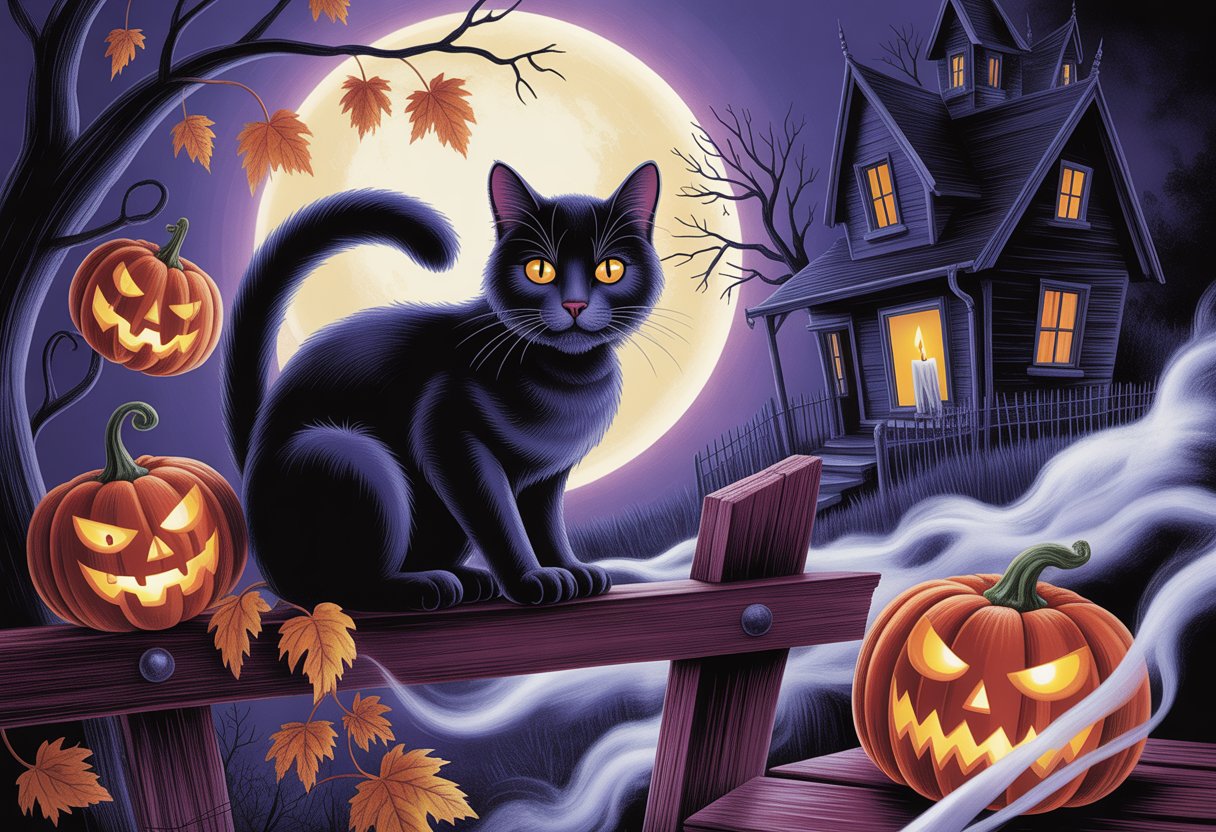
Black cats have sparked curiosity for centuries. They show up in myths, folklore, and seasonal traditions everywhere.
You often see them tied to Halloween. Their dark coats and mysterious presence make them stand out among pumpkins, witches, and ghosts.
The connection between black cats and Halloween comes from a mix of history, culture, and superstition.
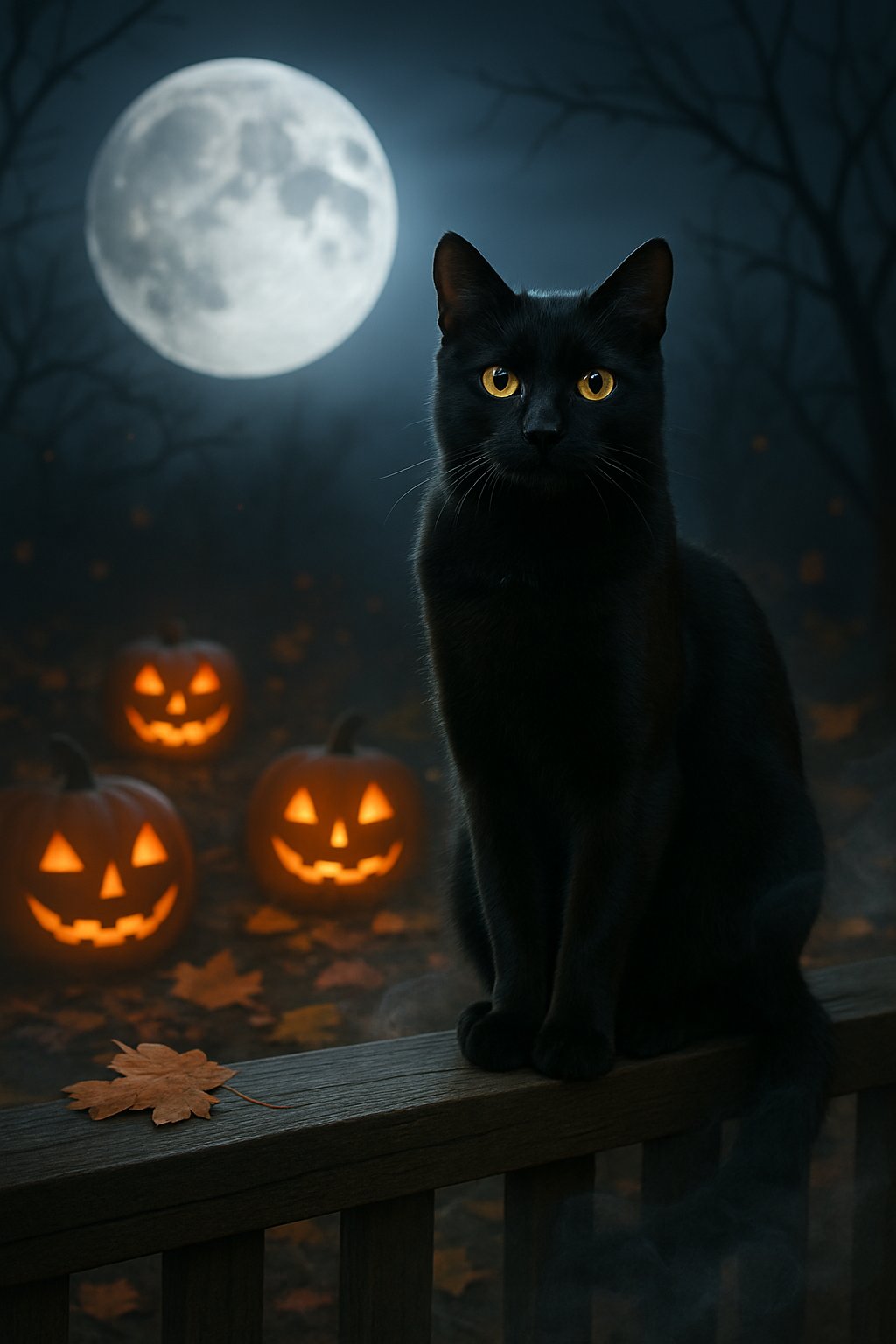
As you dig into these stories, you’ll notice how black cats shifted from being symbols of luck in some cultures to signs of fear in others.
From ancient festivals to modern Halloween decorations, black cats have carried so many different meanings. Their image still shapes how we see them today.
Black cats were once seen as symbols of good luck in ancient cultures.
In ancient Egypt, people treated cats with great respect. They believed cats, black ones included, protected homes from evil spirits and disease.
Owning a cat meant you had good fortune. That’s a pretty nice perk.
Sailors in Europe also thought black cats brought luck. Some kept them on ships to ensure safe travels.
Their families at home cared for black cats to guard against misfortune. It’s kind of sweet, really.
Japan still sees black cats in a positive light. If one crosses your path, it’s often considered a sign of good luck.
Some even believe a black cat can attract love or prosperity. Wouldn’t that be nice?
These older traditions remind us that black cats weren’t always linked to fear or bad luck. Many cultures saw them as protective companions bringing safety, wealth, or happiness.
During the Middle Ages, people linked black cats to witchcraft and evil
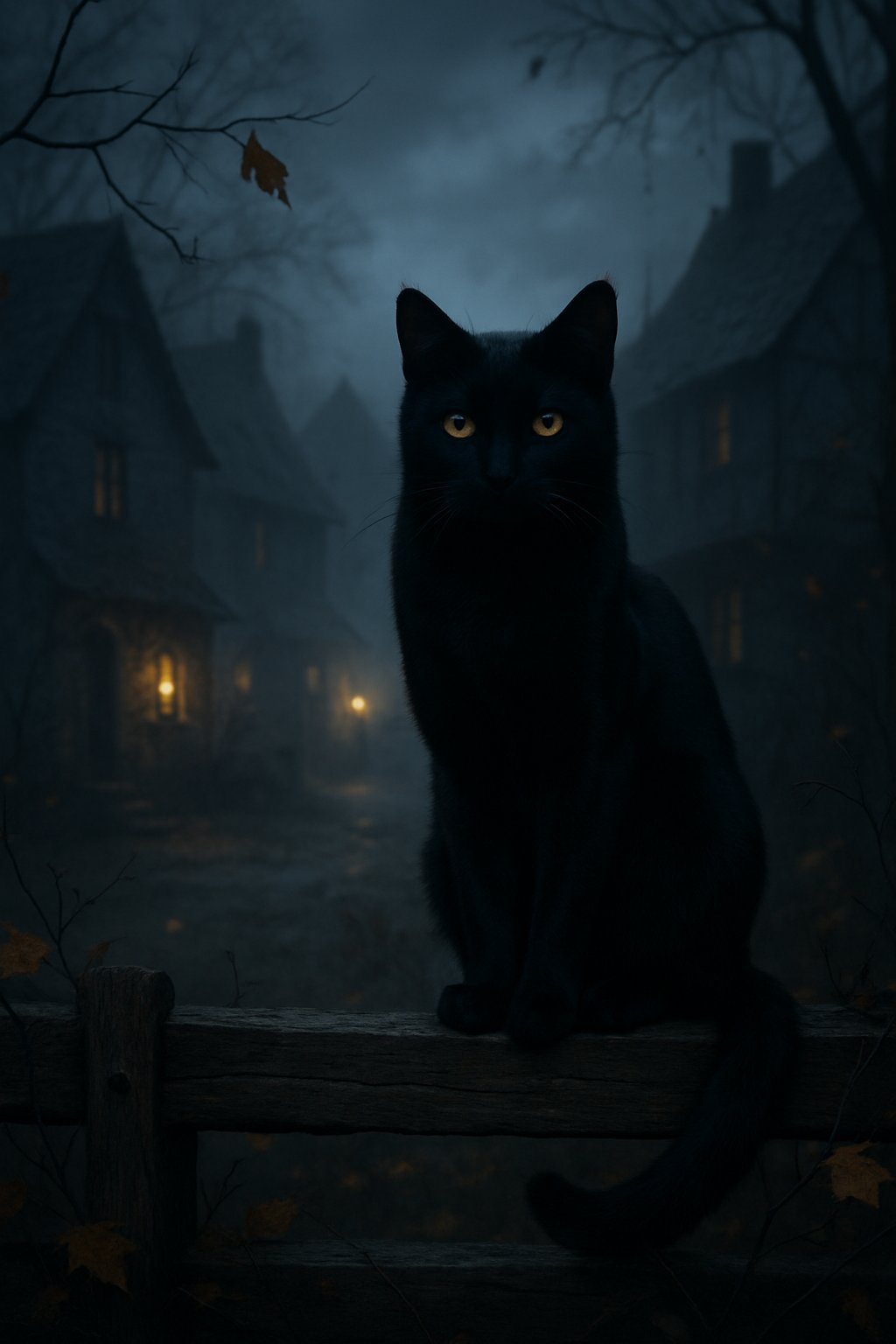
The Middle Ages were a wild time for superstition. People started to see black cats as more than just animals.
Many believed black cats carried dark powers or were connected to the devil. That’s a pretty big leap.
Stories about witches keeping black cats as companions spread quickly. Folks thought these cats were “familiars,” magical helpers that gave witches extra strength for spells.
If you crossed paths with a black cat at night, people might have assumed something supernatural was afoot. The fear only grew stronger during times of crisis, like plagues.
Some blamed cats for spreading disease, while others saw them as signs of evil. Black cats went from protectors to targets of suspicion.
This shift didn’t happen everywhere, but in much of Europe, people treated black cats with fear. Their dark color and nighttime habits made them easy symbols for danger and witchcraft.
European superstition says black cats crossing your path bring bad luck
You’ve probably heard the old tale: if a black cat walks in front of you, bad luck’s on the way. That idea goes way back in Europe.
In medieval times, people tied black cats to witches and magic. Some even thought witches could turn into black cats to sneak around unnoticed.
If one crossed your path, folks believed it blocked good fortune. Norman and Germanic traditions helped spread this belief.
They saw a black cat crossing in front of you as a warning sign. Trouble might follow, they’d say.
Not every culture bought into this, though. Some saw black cats as good luck or even protective.
But in much of Europe, the “bad luck” idea stuck. When you hear people repeat it today, you’re hearing echoes of old European fears.
It’s kind of wild how stories and beliefs hang around for centuries, isn’t it?
Black cats are tied to Halloween because of their mysterious and dark appearance
When Halloween rolls around, black cats seem to be everywhere. Their sleek, dark fur makes them pop out, especially at night.
That spooky look alone helps explain why they’re part of the holiday vibe. Their color blends with shadows, which people used to link with the unknown.
That made black cats mysterious and a little unsettling. Their nighttime habits add to this image.
Cats are more active in the dark, so you’re more likely to spot a black cat moving quietly at night. That silent movement can feel eerie, especially during Halloween.
Even now, you’ll find black cats in decorations, costumes, and stories every October. Their look just fits the mood of the season.
In some cultures, black cats are actually considered lucky and protectors against evil

Not everyone thinks black cats bring bad luck. In some places, people see them as symbols of protection and even good fortune.
In Japan, a black cat can mean luck in relationships and safety at home. The famous “Maneki-neko” statues sometimes show up in black to ward off evil spirits.
Sailors once believed that bringing a black cat on board would keep them safe during long voyages. Families of sailors kept black cats at home, hoping the cats would protect loved ones at sea.
Ancient Egyptians linked black cats to the goddess Bastet, who represented home and protection. People believed these cats carried a sacred energy that could keep away harm.
Even today, some households believe a black cat brings positive energy. Instead of fearing them, you might see them as guardians that keep away negativity.
Witch hunts fueled fear of black cats as witches’ familiars

During the witch hunts in Europe, people believed black cats were more than just pets. They linked them to witches, accusing the animals of helping with spells or dark magic.
The idea of “familiars” played a big role in these fears. Folks thought a familiar was a spirit or animal that served a witch.
If you owned a black cat, people might assume you were up to something. Some church leaders even declared black cats evil or tied to the devil.
That belief spread fast. People hunted or killed cats alongside accused witches.
Just being seen with a black cat could put your life at risk. People thought the animal gave witches power or acted as proof of guilt.
These fears lasted for centuries. Instead of seeing black cats as ordinary animals, people turned them into symbols of suspicion and danger.
Halloween’s black cat connection grew from Samhain, a Celtic festival
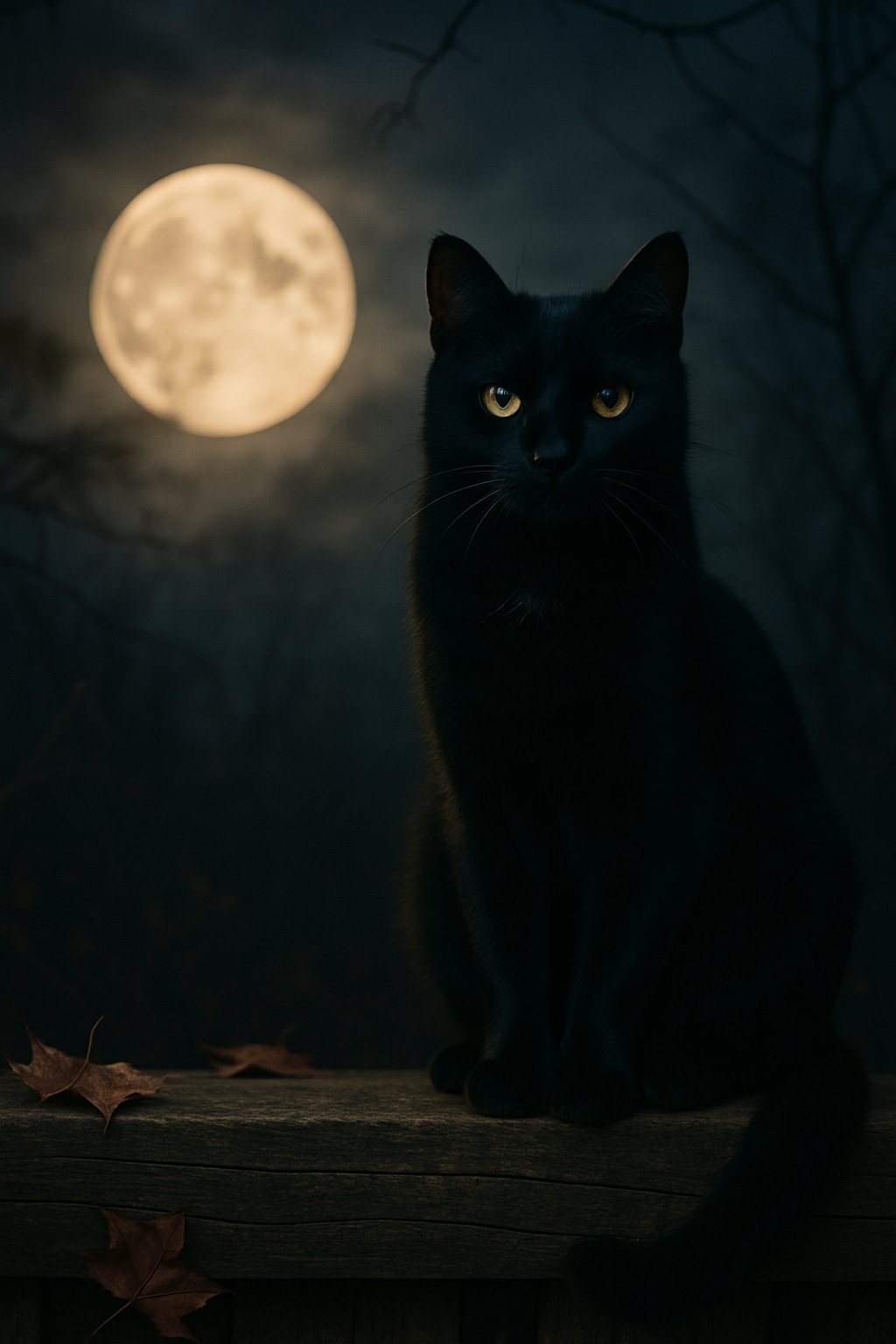
The roots of Halloween go back to Samhain, an old Celtic festival. This event marked the end of harvest and the start of winter.
People thought the boundary between the living and the dead grew thin during Samhain. Spirits were believed to cross over into the human world.
Animals, especially cats, got tied to these beliefs because folks saw them as guardians of that boundary. Black cats, with their dark coats, became linked to mystery and the unseen.
As these traditions spread, people started connecting cats to magic and the spirit world. You can imagine how a sleek black cat at night might have felt like a sign of hidden forces.
When you see black cats in Halloween imagery now, you’re looking at a tradition that started with Celtic views of Samhain thousands of years ago.
Modern Halloween uses black cats to set a spooky, magical mood
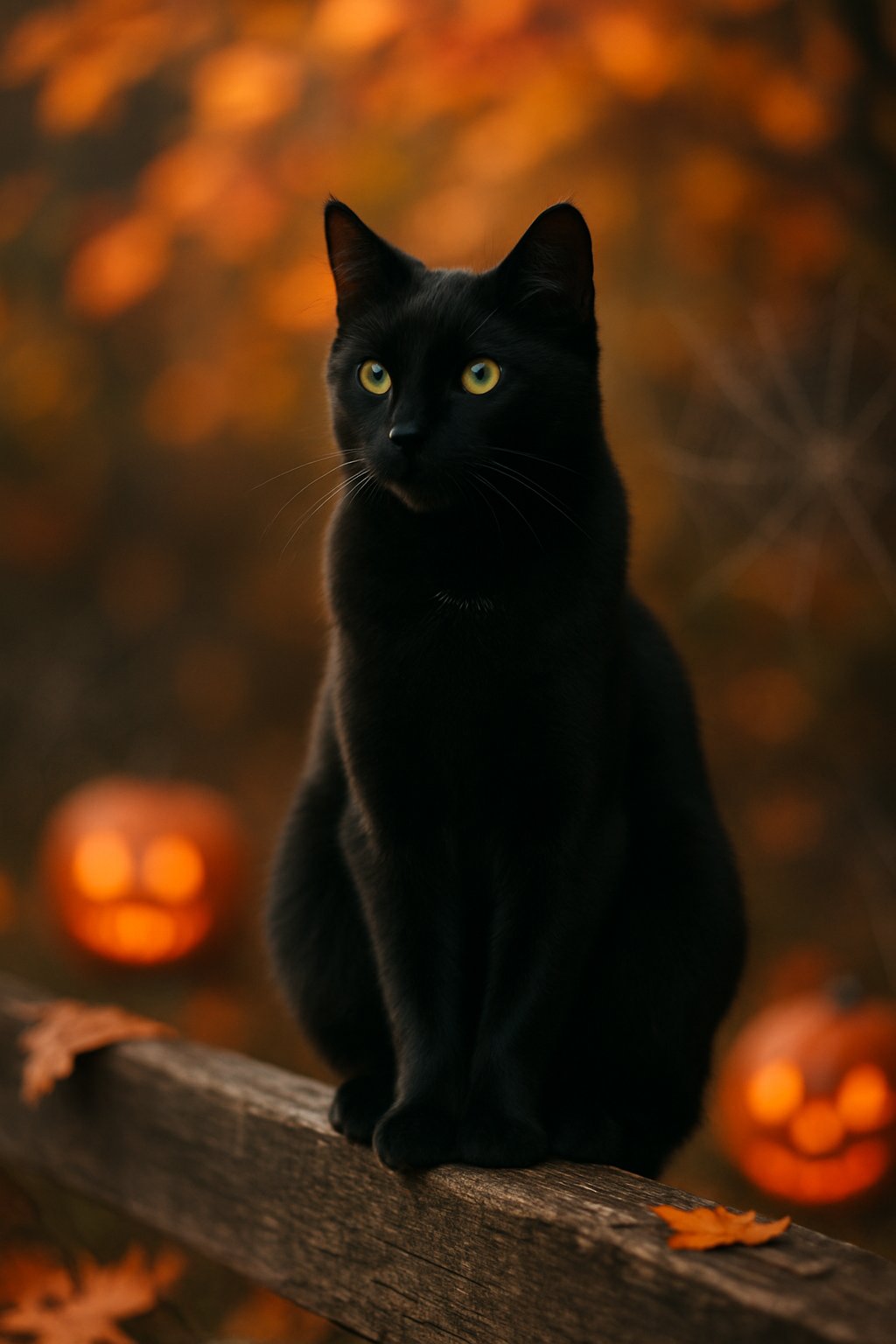
Halloween decorations almost always include a black cat. They show up on posters, costumes, and yard displays because their dark color just fits the eerie theme.
You connect black cats with mystery thanks to centuries of stories about witches and magic. Their sleek look stands out in moonlit scenes.
You’ll spot black cats sitting next to pumpkins, witches, or haunted houses in artwork. They help create a sense of the unknown without being too scary.
These days, black cats are more about Halloween fun than old superstitions. They bring a mix of magic and mystery that fits the playful side of the season.
When you decorate with a black cat image, you’re tapping into traditions that go back hundreds of years. At the same time, you help keep Halloween light, spooky, and festive.
Depending on culture, black cats crossing your path can mean bad luck—or good fortune
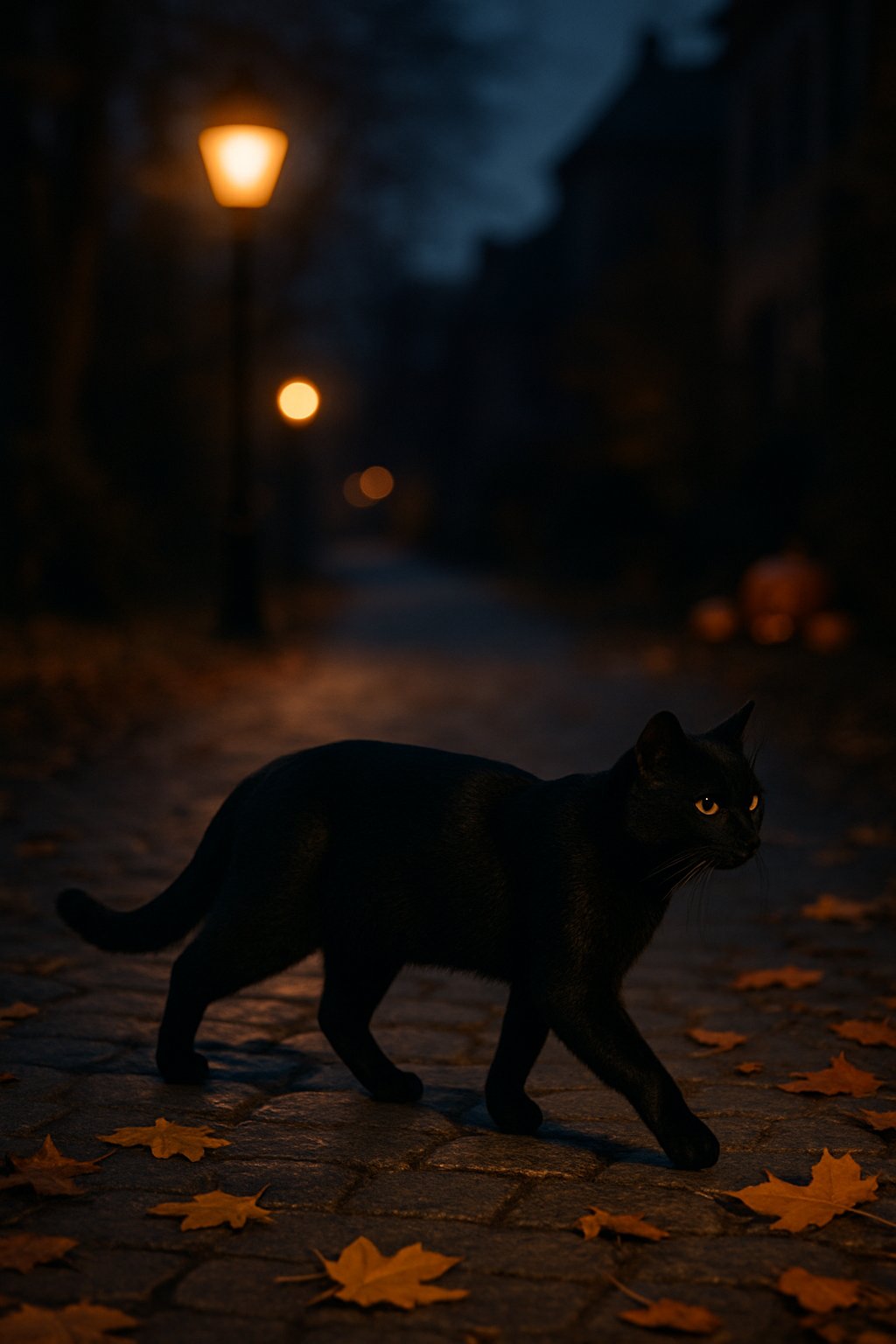
You’ve probably heard the idea that a black cat crossing your path means bad luck. That belief is common in parts of Europe and North America, where people once linked black cats with witches and the supernatural.
In other places, the same event is seen as lucky. In Japan, for example, a black cat crossing your path can be a sign of good fortune.
Some folks in the UK also see black cats as symbols of prosperity and protection. Even within Europe, the meaning can change.
In Germany, some say the direction the cat walks matters. Left to right might bring good luck, but right to left could signal bad luck.
All these differences show how much culture shapes the way we interpret simple events. What feels unlucky in one country might feel like a blessing in another.
So, next time you see a black cat cross your path, remember—it’s mostly about the traditions you grew up with. The cat’s just doing its thing.
Why Black Cats Are Linked to Halloween

You see black cats everywhere around Halloween, thanks to old superstitions and spooky stories about witches. Movies, decorations, and traditions just keep that link going, so black cats show up almost everywhere during the holiday.
Origins of the Connection
People across Europe once believed black cats had some kind of connection to witches—or even the devil. Back in the Middle Ages, folks thought witches could turn into cats and sneak around unnoticed.
That fear made black cats seem suspicious and even dangerous. During the 15th century, church leaders went so far as to call cats “the devil’s favorite animal.” You can imagine how that made people even more wary.
As Halloween grew out of ancient festivals like Samhain, anything linked to spirits or darkness got tangled up in the mix. Black cats, with their night-loving habits and shadowy fur, fit right in.
Settlers brought these beliefs to America. Over time, the black cat just became part of the whole Halloween vibe—superstitions and all.
Pop Culture’s Influence
You spot black cats in Halloween movies, cartoons, and decorations every year. Pop culture keeps the connection alive without even trying.
Classic images show witches with black cats tagging along. That’s been true from old cartoons to today’s films, making it hard not to think of them as magical sidekicks.
Shops fill up with costumes, posters, and yard signs showing black cats arching their backs or staring with glowing eyes. Those images stick, don’t they?
Even if most people don’t honestly believe black cats bring bad luck anymore, the spooky reputation hangs on. Pop culture has turned them into a kind of Halloween mascot, mixing old fears with a bit of fun.
How Superstitions Affect Black Cats Today
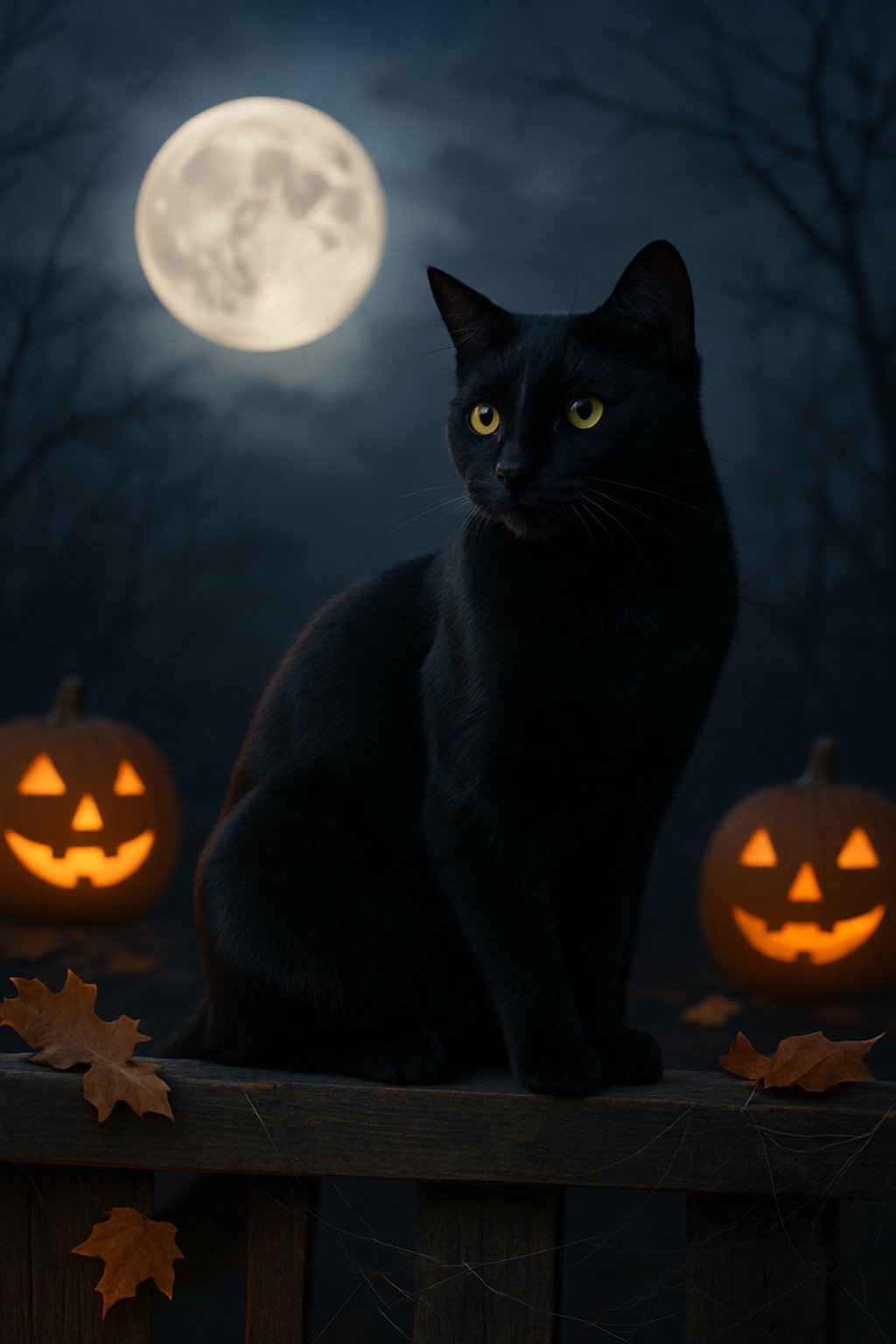
Black cats still carry the weight of old myths. Some of those stories make it harder for them to find homes, even now.
Adoption Myths and Realities
Shelters often say people adopt black cats less often than lighter-colored ones. That’s partly because some folks still worry about bad luck or old witchcraft stories.
Others think black cats don’t photograph well, so they might get skipped over in online listings. During October, some shelters even stop black cat adoptions for a bit.
They worry people might adopt them just for a Halloween prop or a prank, not as an actual pet. It’s not something that happens everywhere, but it says a lot about how superstition still shapes what shelters do.
Research shows black cats can be just as loving and social as any other cat—maybe even more so, if you ask some owners. If you adopt one, you’re not inviting bad luck; you’re just giving a cat a safe home.
Many shelters now run campaigns like Black Cat Appreciation Day to push back against old myths and show off their unique charm. Seems overdue, honestly.
Modern-Day Symbolism
These days, black cats pop up all over pop culture. You’ll spot them on Halloween cards, decorations, and even as quirky mascots for sports teams.
People in Japan and parts of the UK actually see black cats as signs of prosperity or love. That’s a far cry from the fear they sparked in Europe back in the Middle Ages.
Black cats keep showing up in fashion, art, and all over social media. Instead of scaring anyone, they usually get celebrated for being sleek, stylish, and honestly, just photogenic.
It’s kind of wild how a symbol that used to carry so much negativity can turn around and become something positive in regular life.

